[Gallery]
Alexandre Bellenger
I first discovered turntables as a musical instrument by listening to a recording of Yoshihide Ōtomo and Martin Tétreault. I loved it! It was called 21 Situations and it was released in 1999. The music there was so fresh, intuitive, direct, emotional, funny and cleverly played, and it still is today in fact! At the time I really thought that I wanted to try this out myself while I was then mainly still using prepared guitar for my music.
So very soon after that discovery I bought a pair of second-hand Technics MKII turntables from a local music shop, a very cheap mixing board and a pair of loudspeakers. It was then, in the turntable field, a transition period between playing with records and playing without records. For anyone not familiar with this stuff, playing turntables without records might seem a little funny, or even absurd: “What do you do with it then???” In fact, it was possible to build your own equipment to create new sounds that could not be achieved otherwise. It meant changing the needles for springs (Fig. 8), changing the cartridges for contact microphones (Fig. 6) and using a piece of cardboard or a bit of plastic instead of a record!
I had just discovered this new world, so I went for a bit of everything: records, no records, and modifications. I started to customise vinyl records, to create my own turntable individual arm, my own needles, and even my own turntable! I remember once sawing an old turntable in half and sticking on it the arm from another one! It is also possible to use the usual guitar stuff for the turntable — the cables, the pedal effects and even the amplifier — so it was quite easy and natural for me to build this new “instrument”.
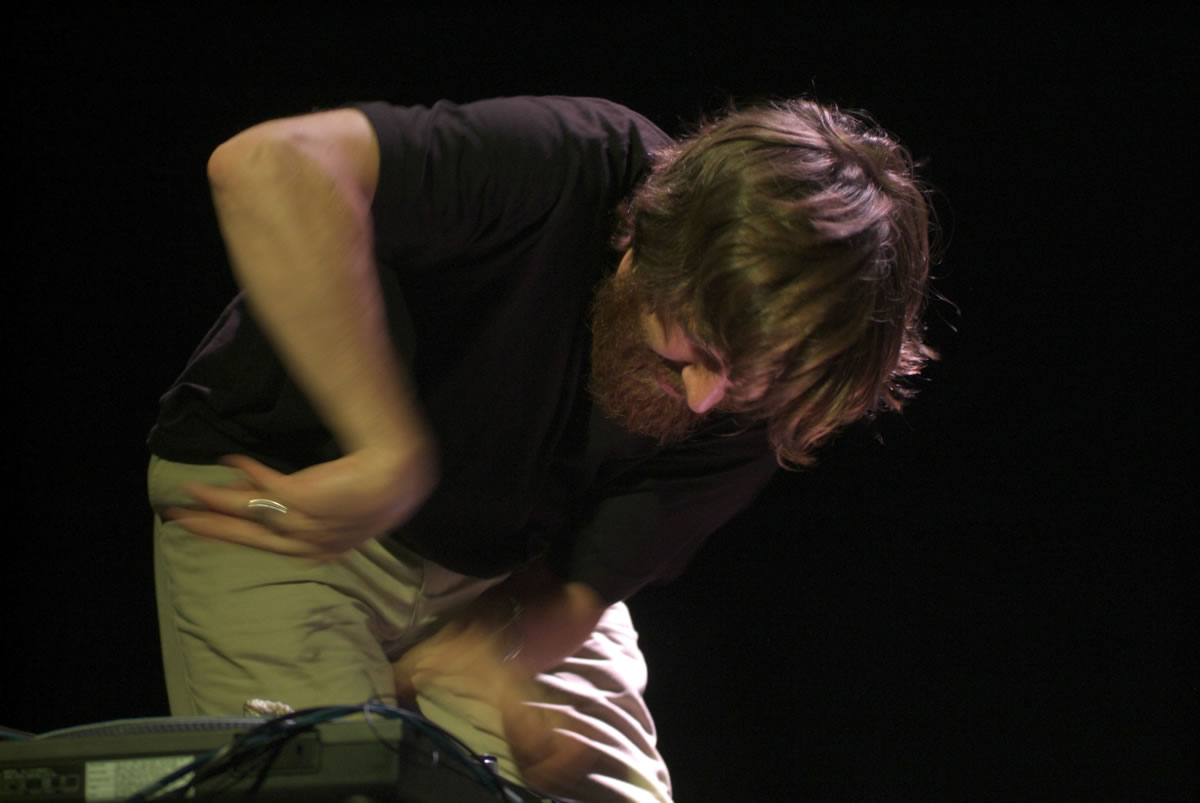
Today I play turntables mostly through a guitar amp but I am not reluctant to use a good PA system, when one is available. I still use records, but sometimes, in a set, I use the turntable without records. Sometimes I use a bow which I rub on a spring (Fig. 12) — Yoshihide Ōtomo used to do this, I got that from him. I also use a very sensitive Sony tabletop microphone onto which I have stuck a stiff piece of cardboard: when pressed onto the side of the platter of the turntable, it creates a very high sound, like a saxophone… or like a train braking when stopping in the station (the kind of noise that is normally very irritating but that I am kind of happy to create!).
For a while I used some small Chinese type cymbals a lot. This also came from watching Ōtomo’s playing! He has been my master for turntable playing, for sure! For a while also, I really just used the turntables as a percussive instruments. When played with a quite strong distortion pedal effect, the whole turntable becomes very sensitive and every part of it makes its own specific noise. Erik Minkkinnen once told me that I was playing “drumtables”! Another performance technique that I really like is the one I call “fast records”. It consists of making the record spin as fast as possible with only one finger (Figs. 1, 11). It seems easy at first but once the record is spinning very fast, it is getting very hard to keep the needle on it and it gets very hard to keep spinning it so fast. It often ends in some kind of “screep, chhhhhrrrritttt, ffffrout” sound! That is also the fun part of the thing, no? Another really special technique, even more difficult to do, consists of rubbing the record very gently up and down on the spindle in the middle of the turntable platter (Fig. 10). This creates a very interesting sound which is then amplified by the needle.
Equipment in Detail
So now let’s have a look at the equipment and the performance techniques I use a bit closer.
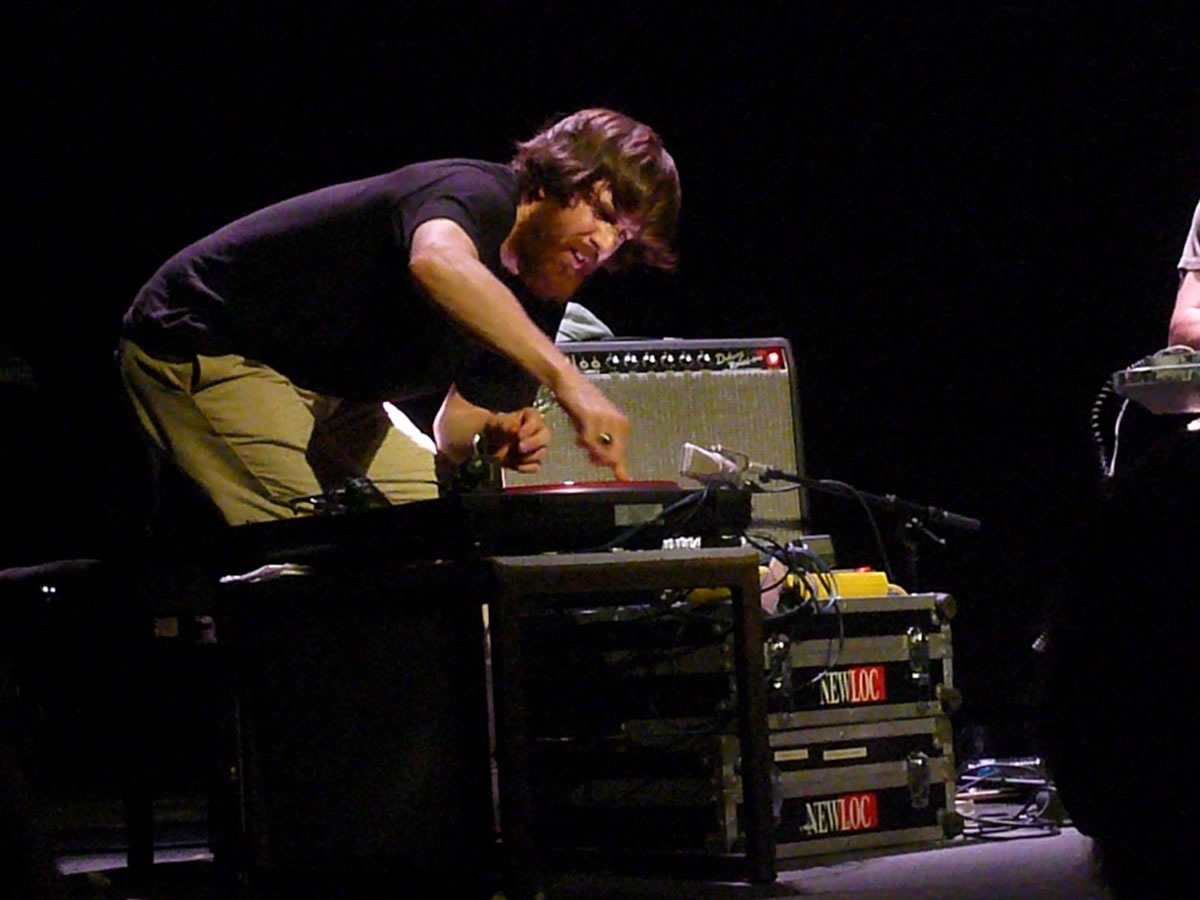

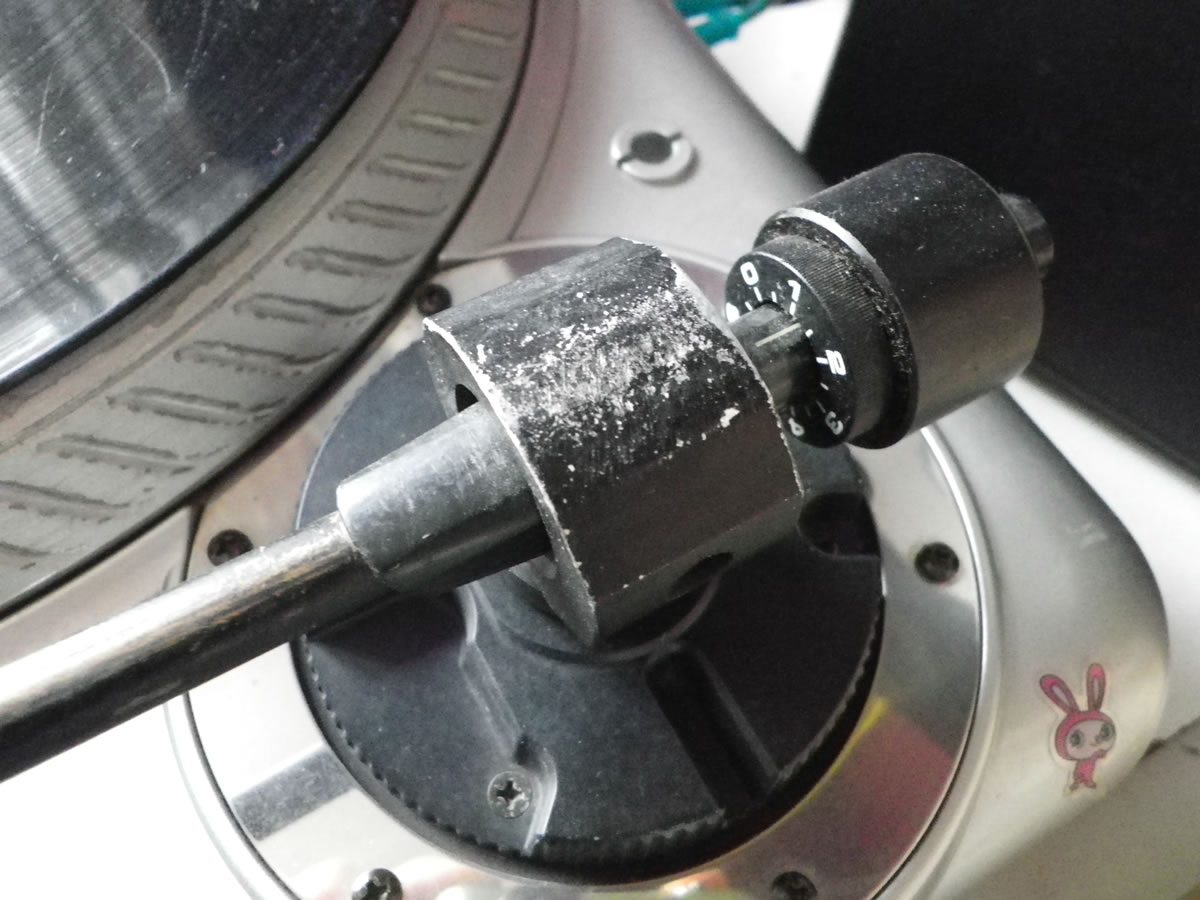
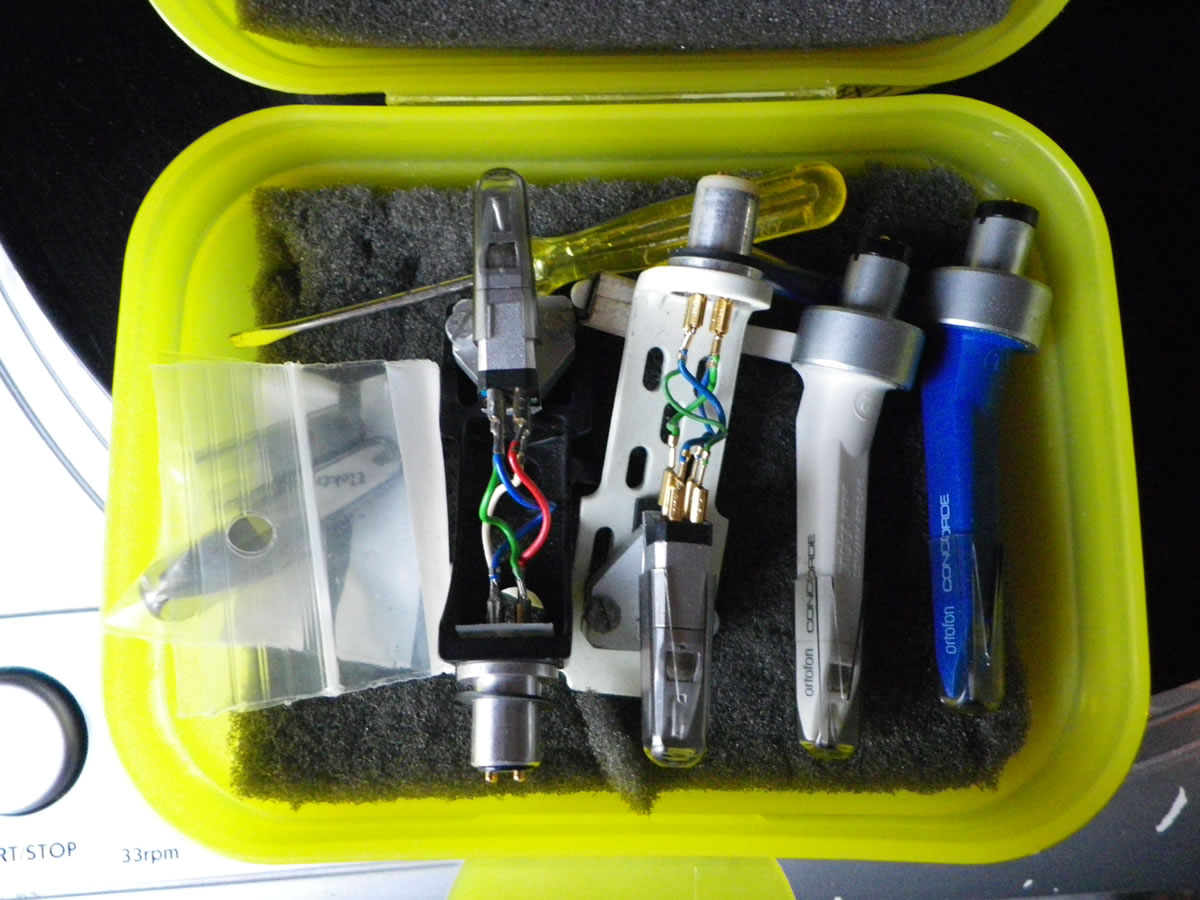

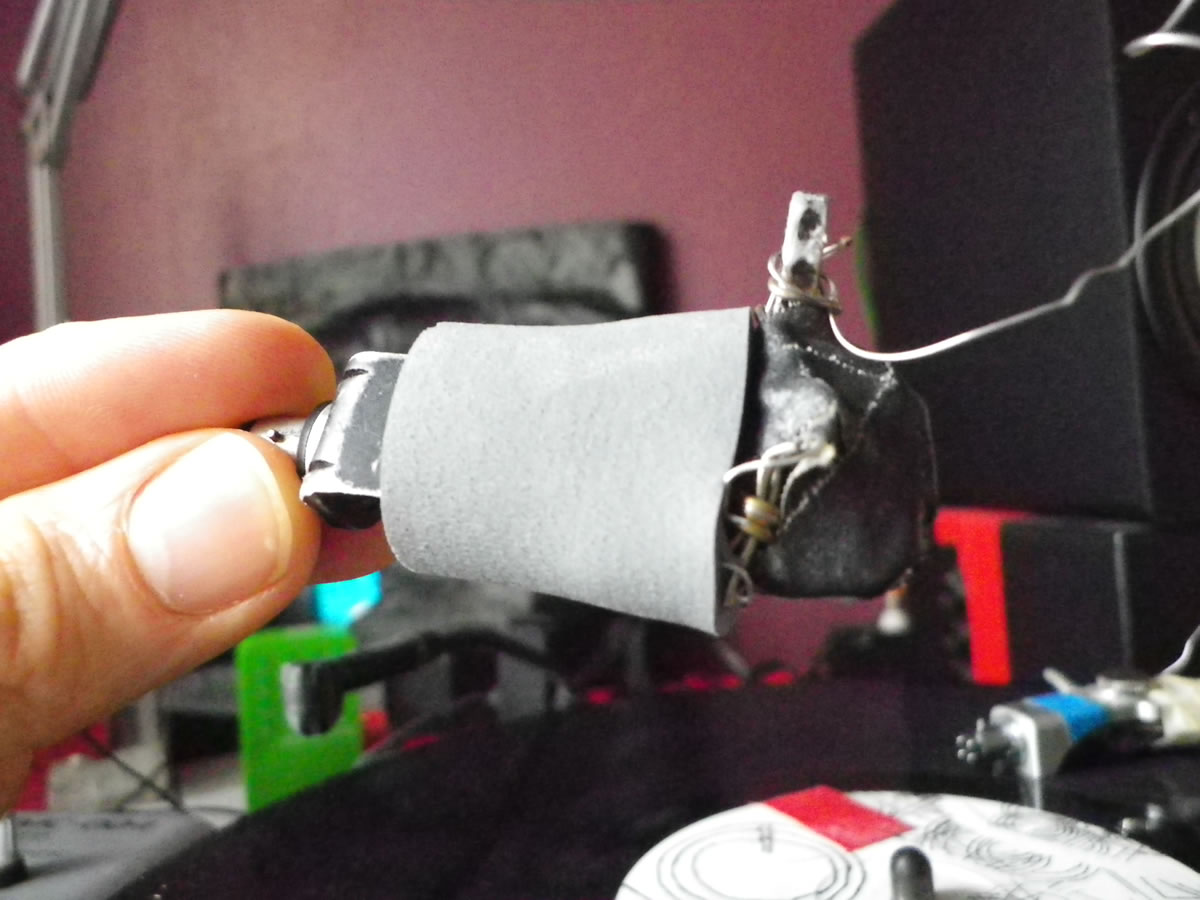
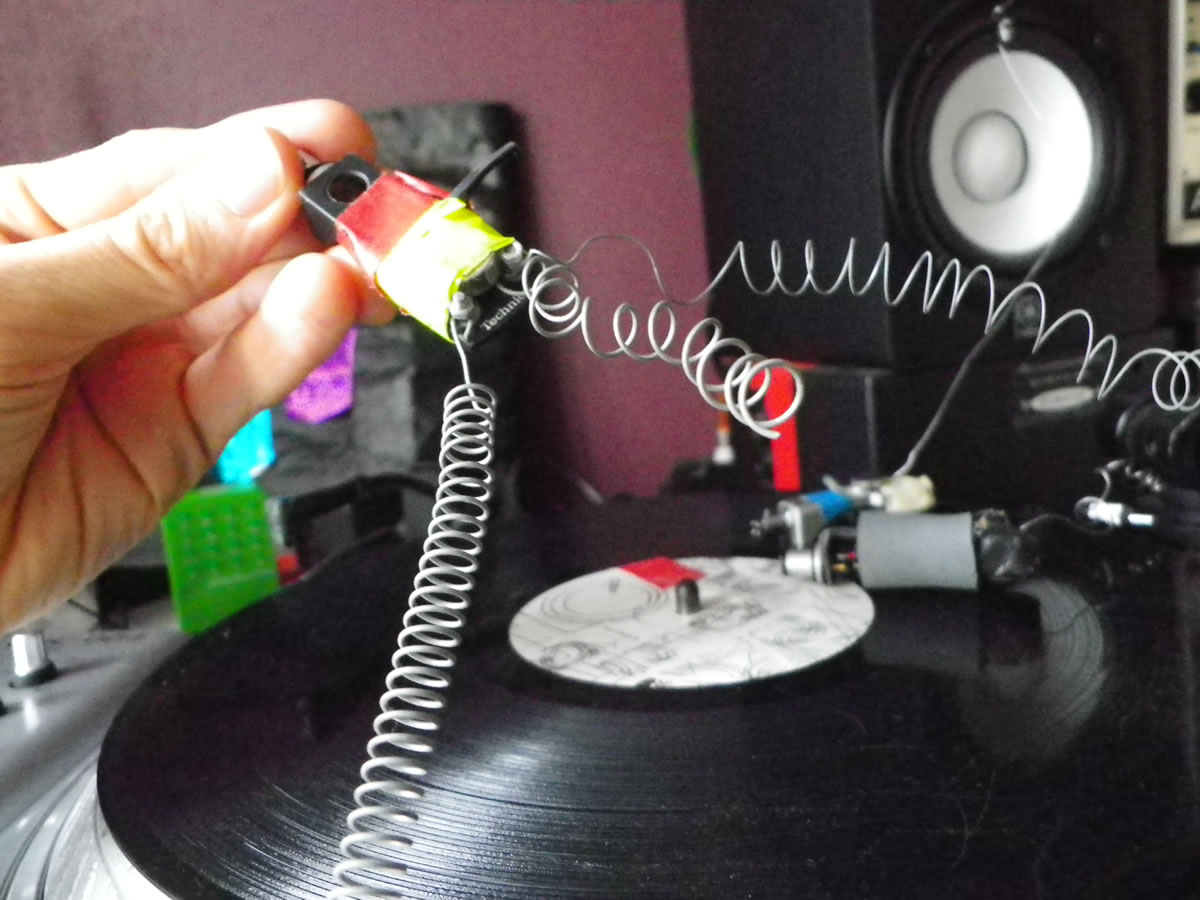
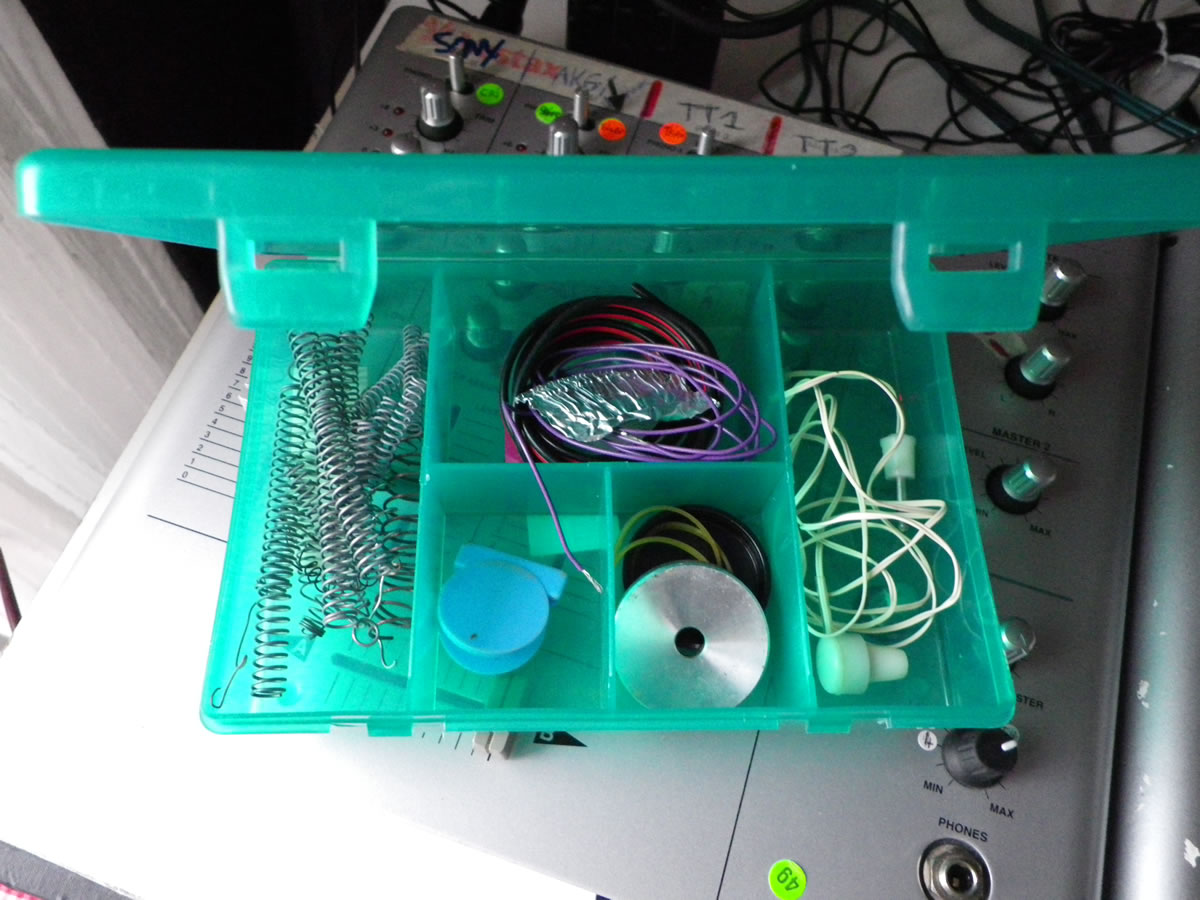
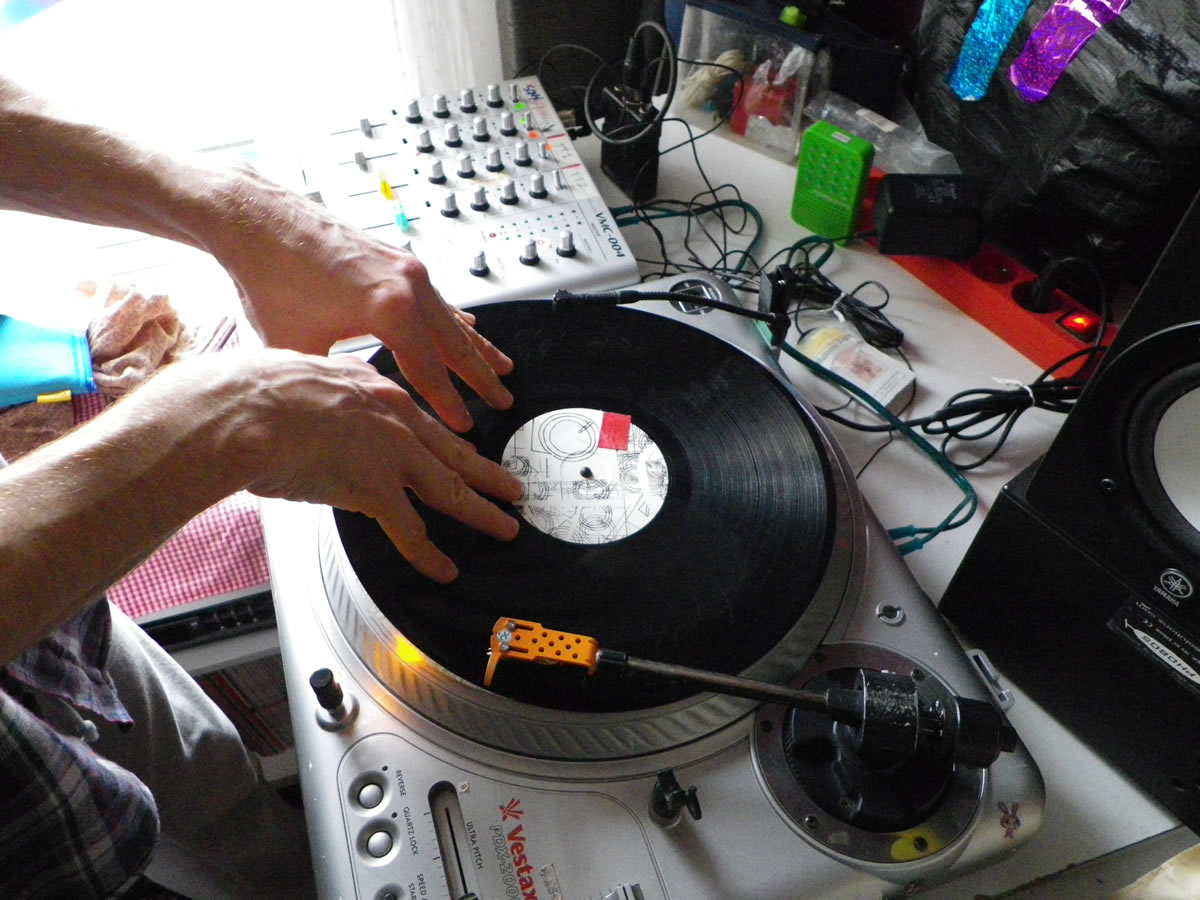
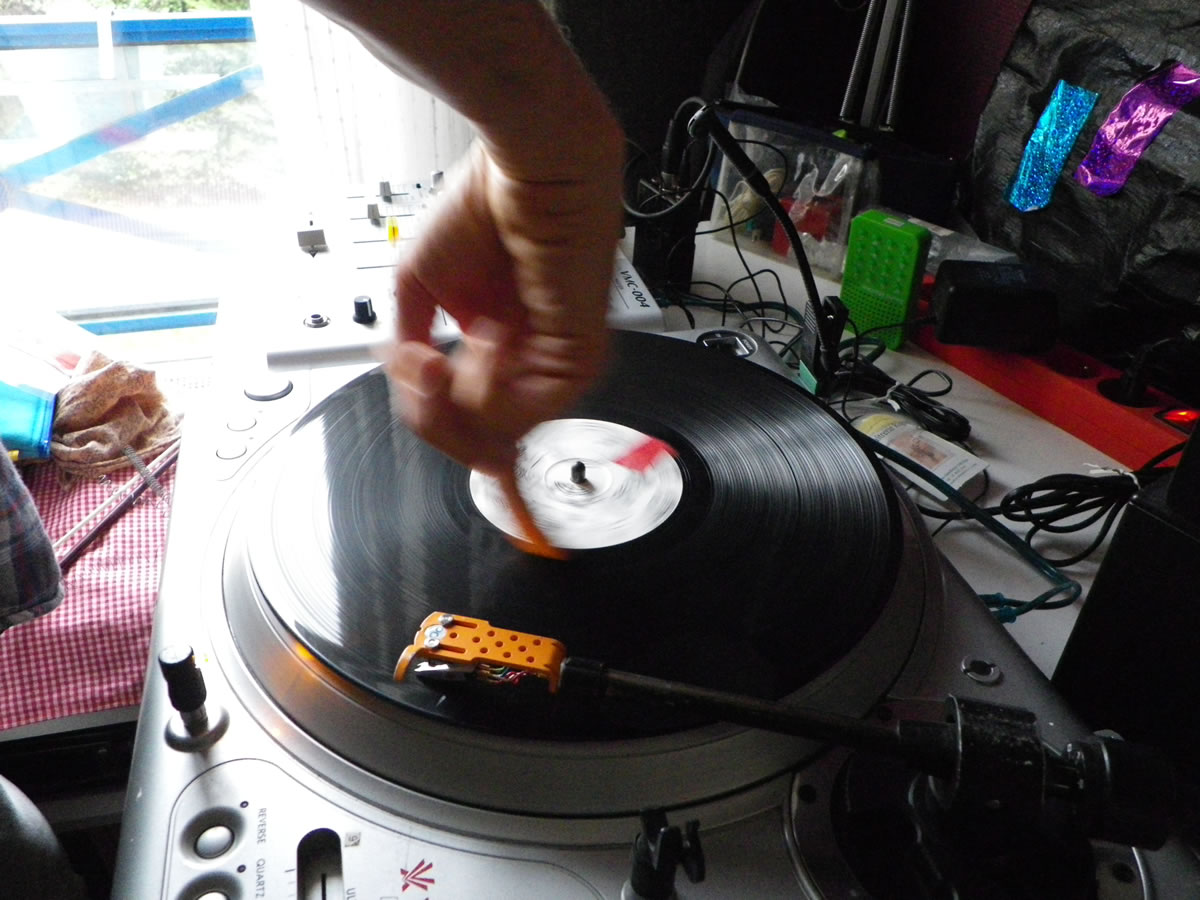
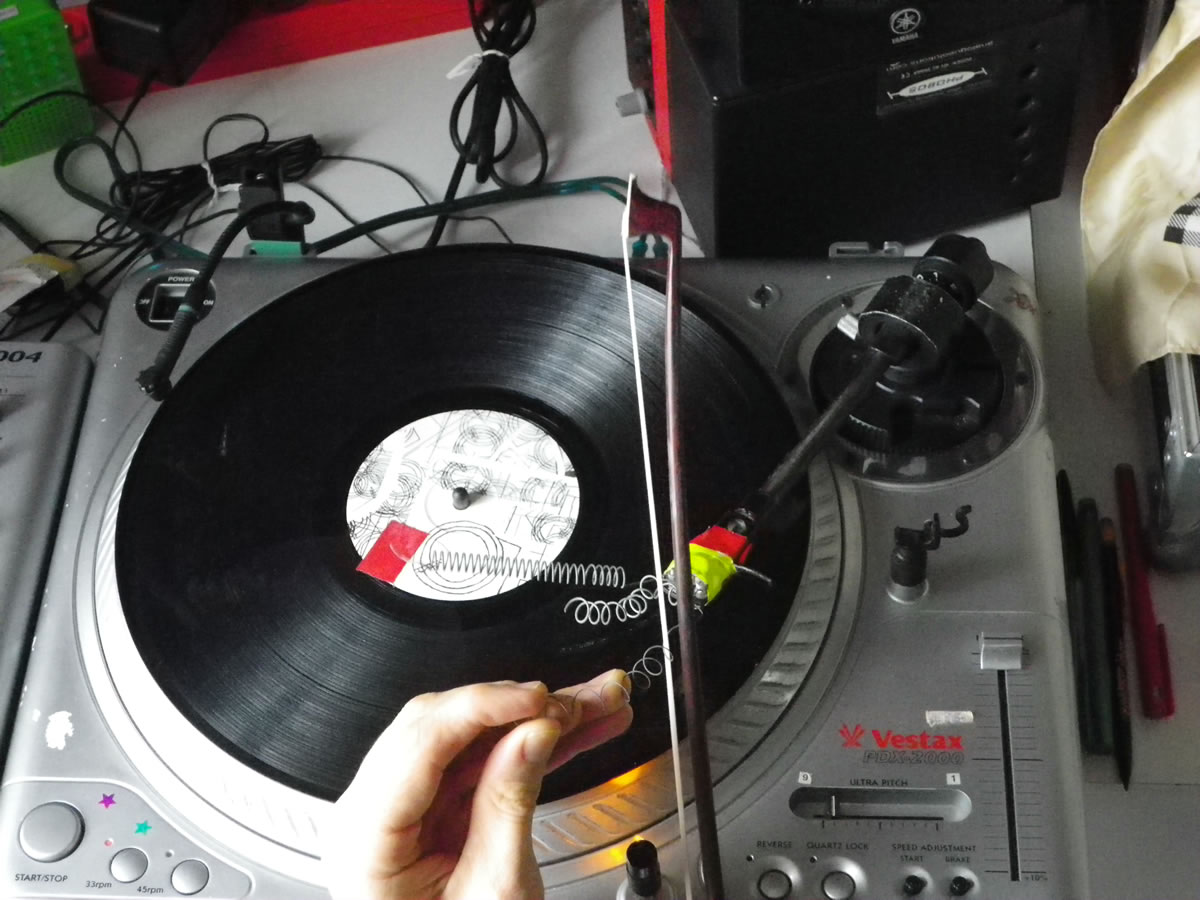
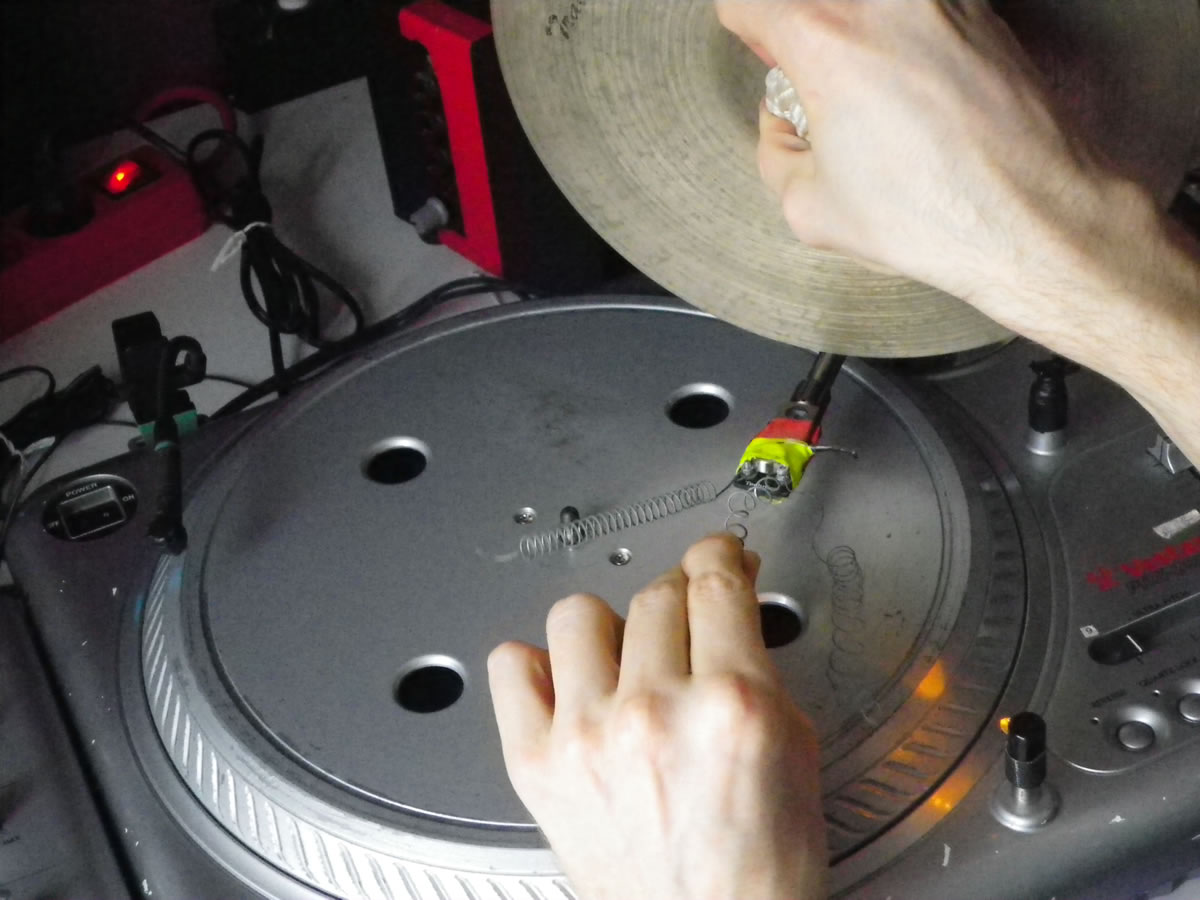

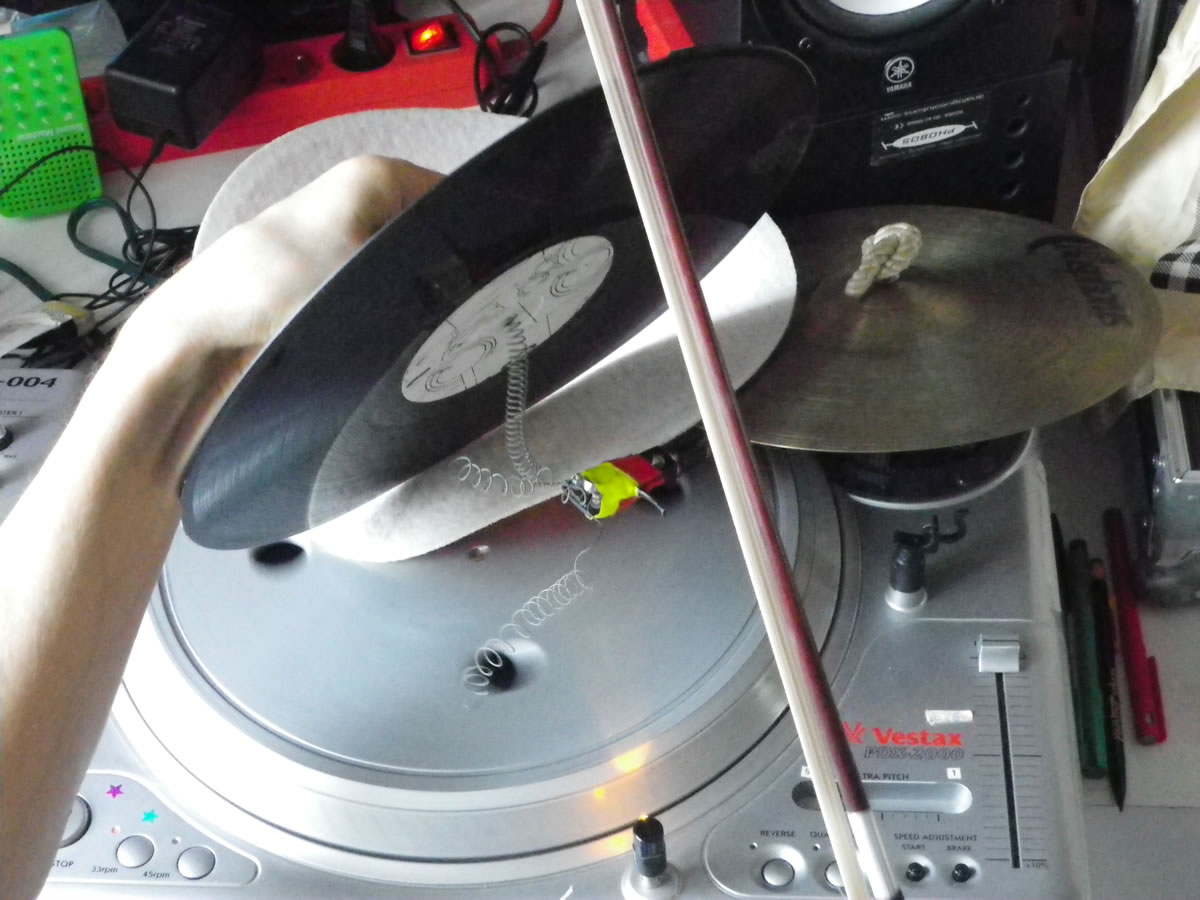
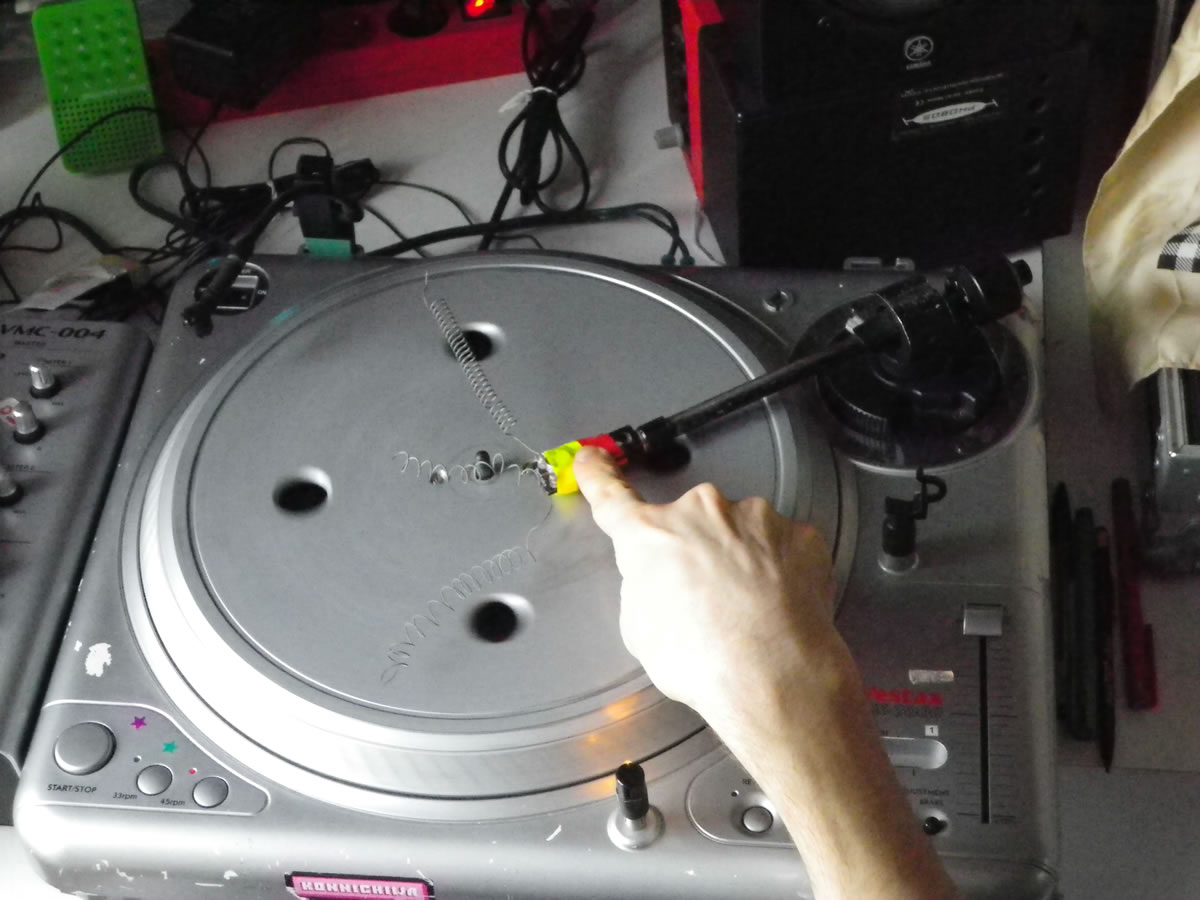
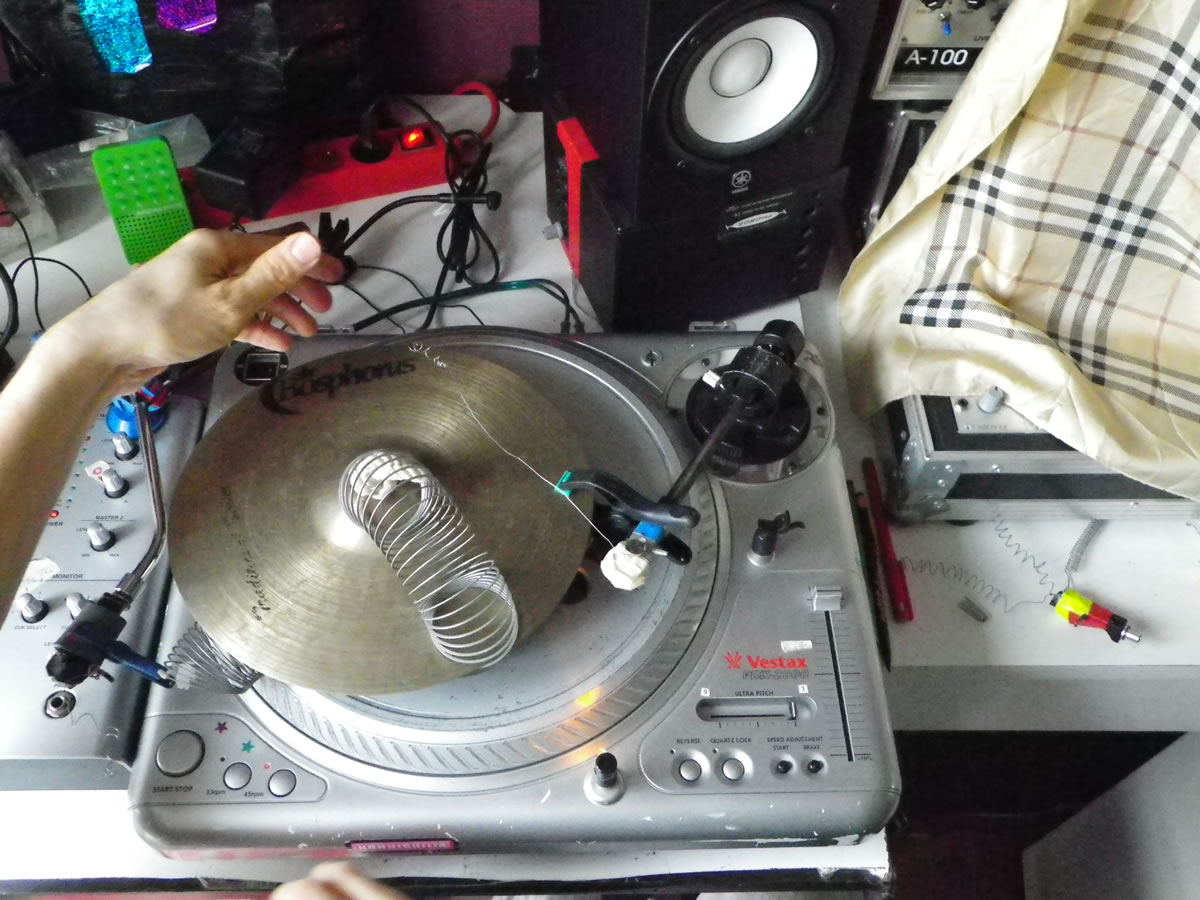

Social top